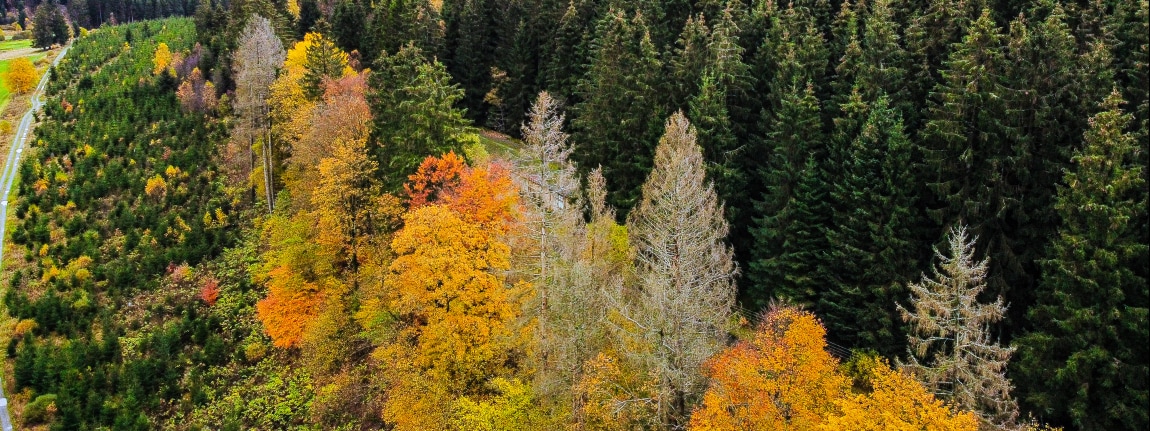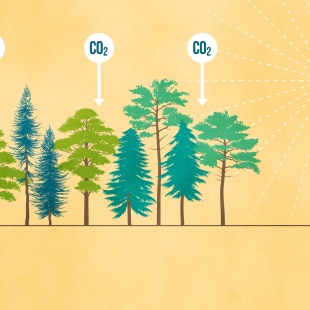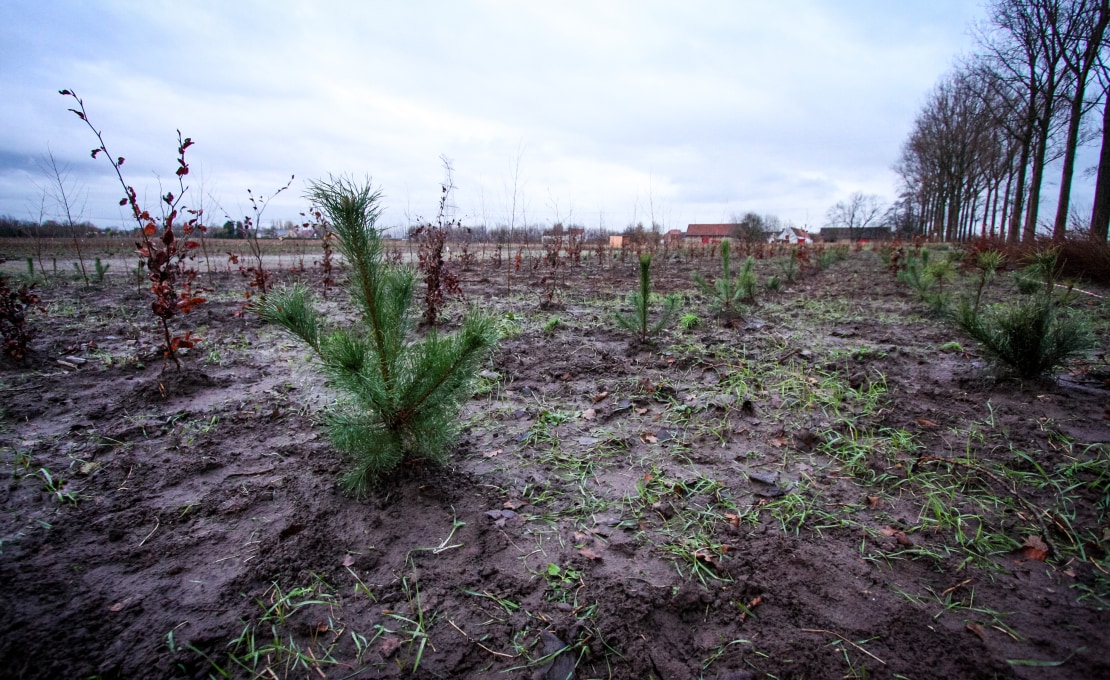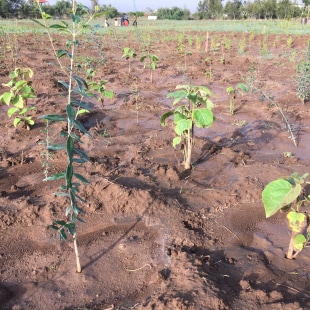The « CAMBIO » project
Led by Lander Baeten, researcher in Ecology and Biodiversity Conservation at the Faculty of Bioscience Engineering (Ghent University, Belgium), “CAMBIO” studies the potential for climate change mitigation and adaptation in young tree plantations. The project will seeking particular combinations of tree species that can optimize the functioning of planted forests in a changing climate.
Supported by the BNP Paribas Foundation through its Climate & Biodiversity Initiative, “CAMBIO” addresses the Sustainable Development Goals (SDG) 15 “Life on Land” and 13 “Climate Action” in particular.
The key role of trees and forests in coping with climate change
Forests cover about 30% of global land surfaces, and according to the Global Forest Resources Assessment (FAO 2020), forest plantations represent 290 million ha, i.e. about 7% of the global forest area, and already provide nearly 50% of timber.
As they represent a significant portion of the carbon stock of terrestrial systems and contribute to the yearly removal of anthropogenic carbon emissions, it makes these ecosystems major drivers of the global carbon cycle. Conserving natural forests, but also increasing the world’s forest area by afforestation and reforestation therefore form a cost-effective as much as crucial nature-based solution to reach ambitious global climate goals (according to recent IPCC* and IPBES** reports, for example). Recognizing this potential, governments, companies, and individuals have pledged to plant billions of trees in the next decade. Yet how to proceed to provide the largest benefits in terms of biodiversity and climate change mitigation and adaptation when implementing afforestation projects?
* IPCC: Intergovernmental Panel on Climate Change
**IPBES: Intergovernmental Science-Policy Platform on Biodiversity and Ecosystem Services
The importance of tree diversity for the forests' functioning
Until now, large-scale tree planting almost exclusively uses a handful of particular tree species. These are planted in monocultures, despite the growing scientific evidence that plantations with higher tree diversity perform better for important ecosystem functions such as tree growth and resistance to disturbances.
Furthermore, most research on the functional significance of forest tree diversity has been conducted in mature forests. Yet, the results from much younger plantations where the trees do not yet have a strong influence on their environment and neighbouring trees might differ.
« The CAMBIO team is really excited to translate the understanding about the importance of tree diversity to actionable afforestation practices and to contribute to the transition from monocultures to mixed forest plantations.»
Lander Baeten, Researcher in Ecology and Biodiversity Conservation at Ghent University
Tree Diversity Network
In recent years, a large number of experimental tree plantations were established across the globe to form the global Tree Diversity Network (TreeDivNet). The experiments were all designed to test the effects of tree diversity and composition on the functioning of forests in the early stages of development. The network represents the largest research facility worldwide to study forest ecosystem functioning in plantations. CAMBIO will build on TreeDivNet, a global network of tree diversity experiments representing the largest research facility worldwide to study forest ecosystem functioning in plantations.
CAMBIO, the ambition to recommend news guidelines for afforestation
In the current context of climate change, biodiverse plantations focus on species and species associations that exhibit potential for high growth and carbon sequestration i.e. climate change mitigation. Simultaneously, plantations need to be most resistant and resilient against the future impacts of climate change – i.e. adaptation.This is essentially a question of trade-offs and synergies between mitigation and adaptation when choosing among various tree species during afforestation, which has direct practical relevance for forest management.
To address this gap in knowledge and contribute to the transition from monocultures to biodiverse plantations, “CAMBIO” (Climate change Adaptation & Mitigation with BIOdiverse forest plantations) research aims at:
- Identifying the best mixtures of tree species to mitigate and adapt to future impacts of climate change, by building on TreeDivNet,
- Promoting the information collected, by using scientific results to refine recommendations for new experimental plantations and practical afforestation projects,
- Reaching out to: practitioners via the Food and Agriculture Organization of the United Nations (FAO), major research groups affiliated with TreeDivNet, as well as a broader audience via peer-to-peer networks and social media.
Saplings of Fagus sylvatica and Picea abies just after they were planted on a former agricultural field, one of the three sites of the FORBIO experiment (Zedelgem, Belgium)
« In the planted forest team here at FAO, we believe that uptake of innovation requires dialogue, and we will be very glad to connect scientists in CAMBIO with practitioners so that the science is practical and practice is based on the best science. »
Benjamin Caldwell, Forestry Officer at the Food and Agriculture Organization (FAO) of the United Nations
Findings useful for tropical and sub-tropical countries
In addition to recommendations for temperate countries, “CAMBIO” will make sure that its findings are useful for developing tropical and sub-tropical countries as:
- The forests in these countries host the greatest biodiversity,
- Plants there grow relatively quickly, removing CO2 from the air during the early establishment phase,
- And in these areas, populations are most vulnerable to the effects of climate change.
CAMBIO: Climate change Adaptation and Mitigation with BIOdiverse forest plantations
How to enhance the key role of forest plantations in mitigating and adapting to global warming?
« CAMBIO holds a very good scientific approach with great network among the community, expert team and potential for outreach. Few risks and little weaknesses are to be foreseen. »
BNP Paribas Foundation's scientific committee




